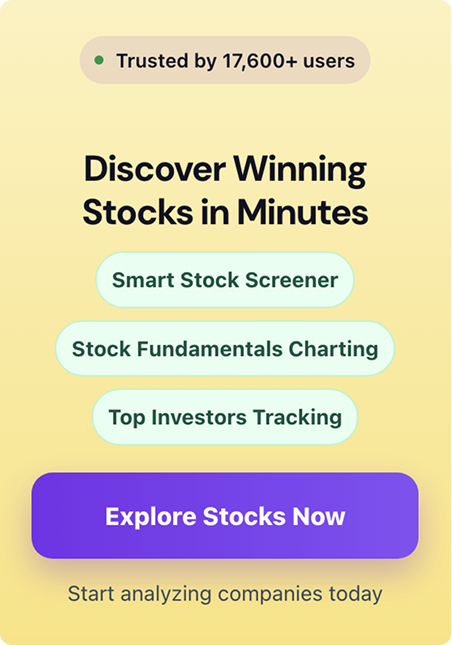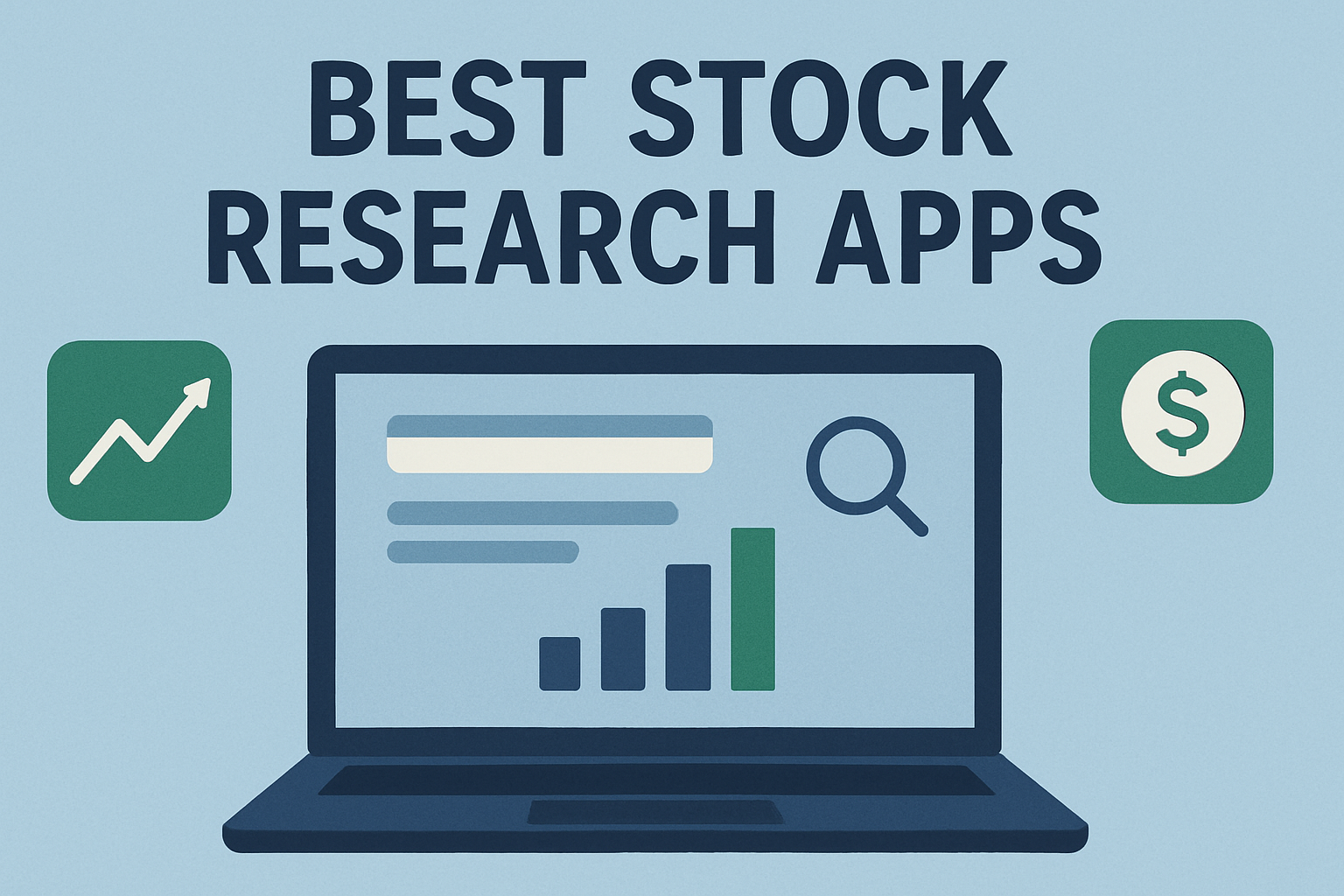Gone are the days when learning about stocks required getting a degree or spending weeks on end in the public library.
In 2025 you now have a world of information at your fingertips. From traditional resources and books, hands-on practice with paper trading, AI-powered tools, and stock investment communities.
The best way to learn about stocks is to utilize a well-balanced mix of all methods. This blog will help you build an effective learning roadmap to learn about stocks based on your goals.
But with so many resources available, finding the most effective learning path can be overwhelming. Should you start with books? Take an online course? Jump straight into paper trading? Or leverage the latest AI stock research tools like Gainify to accelerate your learning?
This guide cuts through the noise to help you build an effective learning roadmap based on your specific goals and investing style. Whether you’re drawn to value investing like Warren Buffett, dividend investing for passive income, or growth investing in emerging sectors, you’ll discover ways to learn more about what most interests you.
Let’s explore how you can learn about stocks in today’s fast moving market, and gain key stock analysis and investing experience at the same time.
Gainify: Where Institutional Data Meets Accessible Learning
Ganify combines institutional grade S&P Global Intelligence data, an AI stock analysis assistant that you can ask all your important stock investing questions, and stock analysis education built into the platform.
With Gainify, you’ll be able to build practical knowledge through hands-on exploration of real market data.
Importantly, Gainify integrates educational resources directly into the analysis experience. Every key financial metric comes with an interactive tooltip that activates when you hover over it.
When examining “Revenue Growth,” you’ll find a tooltip explaining that the metric “refers to the increase in a company’s total income from its core business operations, typically compared year over year,” and highlights why it’s important: “Revenue growth is a critical factor in determining a company’s valuation. Investors often view it as a key sign of a company’s potential for long-term success and profitability.
Additionally, data visualizations include summary tags that highlight key insights – helping you match what you see on the chart with the main investing insights and takeaways it shows.
Gainify doesn’t just teach you about stocks, it helps you research and think like an investment analyst.
How to Use Gainify AI to Learn About Stocks
Gainify AI is like having a stock investment mentor available to you 24/7. It’s built specifically for investors and connected to real-time Wall Street data from S&P Global Market Intelligence. Your stock research will benefit from accurate, current insights that you can trust.
For example, asking “How do I know if a company is profitable?” will get you a comprehensive answer covering the nuances of revenue, return on equity (ROE), profitability ratios, earnings per share (EPS), cash flow analysis, trend analysis, and more.
Importantly, Gainify AI understands that everything must be analysed within a broader market context. You’ll be guided to compare key profitability metrics with industry peers to gauge relative performance – so you can understand if a company’s profitability is strong within its sector or not.
This deep contextual understanding of stocks, fundamentals, and market context will help you start thinking and analyzing like an investor.
Learn about stocks by asking Gainify AI questions such as:
- What is a PE ratio?
- How is a stock price determined?
- How do I research a company before buying its stock?
- What’s the difference between market cap and stock price?
- What does it mean when analysts give a stock a ‘buy’ rating?
You can also ask Gainify AI to analyze a stock, compare industry players, uncover top dividend paying stocks, and more.
The real beauty of learning with Gainify AI, though, is that you can start wherever your curiosity leads you. No need to work through textbooks chapter by chapter – simply jump right into the questions that matter most to you.
How to Use Earnings Call Summaries to Learn About Stocks
Earnings calls are your first row seat for some of the most important conversations in the world.
Every quarter, company executives hold calls with analysts and investors where they discuss performance, strategy, and outlook.
Gainify’s AI-powered earnings call summaries turn these hours-long calls into clear, actionable insights. As one user described them: “no-nonsense, no-fluff summaries” that highlight what actually matters for your investment decisions.
Analyzing earnings call summaries helps you:
- Read between the lines of corporate communication
- Notice when management teams are confident versus defensive
- Synthesize data with the qualitative context that numbers alone can’t capture
- Uncover operational details that impact whether a company will succeed or struggle
- Understand entire sectors including their competitive pressures, market trends, regulatory changes, and supply chain dynamics
Each earnings call summary adds to your understanding of business cycles, industry dynamics, management quality, and more. Analyzing earnings call summaries is a great way to learn about stocks, companies, and what drives them.
You will become the rare type of retail investor who truly understands the businesses behind the stocks.
How to Use Top Investor Tracking to Learn About Stocks
Gainify’s top investor tracking gives you access to the playbooks of Wall Street’s best. You can track their real portfolios, recent trades, and investment patterns to learn from their decision-making process.
Gainify gives you access to the portfolios of renowned investors like:
- Warren Buffet of Berkshire Hathaway
- David Tepper of Appaloosa Management
- Cathy Wood of Ark Investment Management
- Chase Coleman of Tiger Global Management
- Dev Kantesaria of Valley Forge Capital Management
Learn from top investors by exploring:
- What types of companies do legendary investors typically buy?
- How concentrated or diversified are successful investor portfolios?
- When do top investors buy more of a stock vs. selling it?
- What sectors do different types of investors focus on?
- How do professional investors react to market volatility?
- What can be learned from comparing different investor strategies?
Asking yourself these questions will help you understand the reasoning behind these investment decisions, enabling you to think more critically about portfolio building, investing psychology, and stock analysis.
How to Use Gainify’s Trending Section to Learn About Stocks
Gainify’s trending stocks section gives you a real-time window into market psychology and investor behavior.
You’ll be able to track the most traded stocks, emerging investment themes, and real-time moves from insiders, institutions, and Congress members.
When you see company executives buying their own stock, you can explore what this might signal about the company’s prospects. Or if you see Congress trading, you can look into the impact of government policies driving stock growth or selloffs.
Learn from market trends by exploring:
- What themes and sectors are gaining investor attention?
- How do different types of news events affect stock prices?
- What can insider buying/selling patterns tell you about company prospects?
- How do political developments influence different industries?
Other Gainify Features to Help You Research Stocks
Stock screeners: Like having a research assistant that can instantly filter through thousands of companies to find exactly what you’re looking for.
Gainify’s screeners combine over 500 filters across market data, fundamentals, forward estimates, and valuation multiples.
Once you understand what makes a quality company, you can set up stock screeners to automatically uncover stocks meeting your specific investing criteria.
Proprietary metrics: Gainify provides access to five proprietary metrics you won’t find anywhere else. These indicators focus specifically on predicting future value and include:
- Management’s ability to consistently deliver growth and shareholder value.
- A stock’s current market strength analyzed through multiple price-movement indicators.
- Whether a stock is undervalued, fairly priced, or overvalued (based on market benchmarks and a stock’s own history.)
- A stock’s expected financial trajectory compared to both industry competitors and the broader market.
- A stock’s ability to weather economic downturns and continue meeting its long-term obligations.
Analyst estimates: Access to the world’s largest database of analyst-verified valuation estimates available to retail investors.
Sourced directly from S&P Global Intelligence, Gainify’s analyst estimate data provides both historical context and forward-looking projections.
- Historical insights – See how analyst estimates have evolved over time and compare them against actual achieved results.
- Forward estimates – Access up to 3 years of forward-looking analyst estimates for key metrics like EPS, revenue, net income, EBITDA, EBIT, operating cash flow, and more.
Other Top Resources to Learn About Stocks
Round out your learning with supplementary resources like short online courses, popular investing books, and paper trading for experience.
Online courses and certification programs
If you prefer to watch an online course and have your knowledge tested by regular quizzes, then online courses may suit your learning style best.
- Yale University’s Financial Markets (Coursera): Nobel laureate Robert Shiller teaches you stocks, bonds, dividends, market caps, and more – with both academic and practical perspectives.
- Morningstar’s Investing Classroom: Free courses that deliberately eliminate complex jargon. Great if you’re just getting started and want a broad overview of stocks, bonds, and ETFs.
The popular learning and further education platform EdX also has a range of courses related to capital markets, finance, and stock trading.
Books that stand the test of time
If you need something to read on the way to work or while you kick back on the weekend, then grab one of these top books for learning about stocks:
- The Intelligent Investor by Benjamin Graham: (Still) the definitive guide to value investing.
- One Up on Wall Street by Peter Lynch: Teaches you how to leverage everyday observations for investment opportunities.
- “A Beginner’s Guide to the Stock Market: Everything You Need to Start Making Money Today” by Matthew R. Kratter: Covers how to select stocks, manage risks, and trade strategically.
Paper trading for risk-free experience
Paper trading (virtual simulated trading) allows you to practice trading strategies with virtual money before risking your own capital.
Top platforms for paper trading include:
- TradingView for technical analysis enthusiasts
- Webull for stocks, ETFs, options, and futures
Paper trading will help you test strategies, see how your understanding of stocks plays out in the real world, develop emotional and trading discipline, and more.
Conclusion: the future of stock education is integrated and personalized
The most effective way to learn about stocks in 2025 is to mix multiple learning styles that complement each other – and to dive into stock analysis and paper trading to put your newfound skills into real-world action.
- AI-powered tools like Gainify provide instant answers to your questions and analyze complex data in seconds
- Traditional resources like books and courses offer time-tested wisdom and structured frameworks
- Paper trading builds practical experience without financial risk
- Studying top investors reveals successful strategies and decision-making processes
- Community engagement challenges your thinking and exposes you to diverse perspectives
All this together forms a powerful system to turn you into a top investor who can uncover quality companies.
But as you set out on your investing journey – internalize this: Investing mastery requires not only technical knowledge and practice, but strong psychological discipline. Markets will test your patience, challenge your convictions, and tempt you to abandon your strategy at precisely the wrong moments.
With today’s resources at your fingertips, there’s never been a better time to start your investing journey.
Ready to accelerate your stock market education? Create a free Gainify account today and gain access to AI-powered analysis, top investor tracking, and comprehensive stock reports.
And remember – never stop learning. Continually adapt your learning approach and stock research process as your skills develop and markets evolve.
Want to Learn More About Stocks and Investing? – Read More at the Gainify Blog
Ready to deepen your investment knowledge? The Gainify blog offers expert insights, practical guides, and in-depth analysis to help you become a more confident investor:
- What Is Operating Cash Flow? – Understand this critical metric that reveals a company’s ability to generate cash from core business activities.
- What Is a Good PEG Ratio? – Learn how to use this powerful valuation metric that accounts for both price-to-earnings and growth rate.
- What Is a Good Return on Invested Capital (ROIC)? – Discover how to evaluate a company’s efficiency at allocating capital to profitable investments.
- EPS Meaning: A Comprehensive Guide – Master the fundamentals of Earnings Per Share and why it matters for stock valuation.
- Long Term vs. Short Term Investing – Compare these two approaches to find the strategy that best suits your financial goals and temperament.
- How Does Inflation Affect Stocks? – Understand the complex relationship between inflation and different types of stocks.
- Why Are Stocks Dropping? – Learn about the macro and company-specific factors that cause market declines.
FAQ
What is the fastest way to learn about stocks?
The fastest way to learn about stocks is to combine AI-powered tools like Gainify with hands-on paper trading experience. While traditional methods like books and courses provide solid foundations, modern AI tools can answer your specific questions instantly and help you analyze stocks in real-time. This accelerated approach lets you quickly understand complex concepts while practicing with simulated trades to build practical experience without risking real money.
Do I need a finance degree to learn about stocks?
No, you absolutely don’t need a finance degree to learn about stocks. Today’s learning resources like Gainify’s AI assistant, online courses, books, and investment communities make stock market knowledge accessible to everyone. What matters most is your commitment to learning, willingness to practice consistently, and developing the psychological discipline to stick with your investment strategy.
What should beginners learn first about stocks?
Beginners should first learn the fundamentals: what stocks actually are (ownership shares in companies), how the stock market works, basic financial metrics (P/E ratio, revenue, earnings), different investment strategies (value, growth, dividend), and risk management principles. Use tools like Gainify AI to ask specific questions about concepts you don’t understand.
How can I learn about stocks for free?
You can learn about stocks for free through multiple channels. Start with Gainify’s free tier, which provides access to AI-powered stock analysis, top investor tracking, and comprehensive stock reports. Public libraries offer access to investment books, and many brokerages provide free educational content. Additionally, paper trading accounts allow you to practice without financial risk.
How long does it take to learn stock investing?
Learning the basics of stock investing can take as little as a few weeks of dedicated study. However, becoming truly proficient is an ongoing journey that continues throughout your investing career. Most investors see a significant learning curve in their first year as they experience market cycles and refine their strategy. With today’s AI-powered tools like Gainify, the initial learning phase can be dramatically shortened, but developing the emotional discipline and pattern recognition of an experienced investor takes consistent practice over time.
Is it better to learn technical or fundamental analysis?
It’s valuable to learn both technical and fundamental analysis, as they serve different purposes. Fundamental analysis helps you understand a company’s intrinsic value, business health, and long-term potential, which is essential for making informed investment decisions. Technical analysis can help with timing entries and exits and understanding market sentiment. Most successful investors start with fundamentals to select quality companies and may incorporate technical analysis to optimize their buying and selling timing.
How do I develop my investment strategy?
To develop your own investment strategy, first identify your financial goals, time horizon, and risk tolerance. Then explore different investment philosophies (value, growth, dividend, etc.) to find approaches that resonate with you. Use Gainify’s AI to understand these strategies in detail and see how top investors implement them. Start paper trading to test various approaches without risk. As you gain experience, refine your strategy based on what works for your personality and goals, keeping in mind that the most successful strategy is one you can stick with through market cycles.


